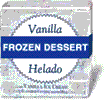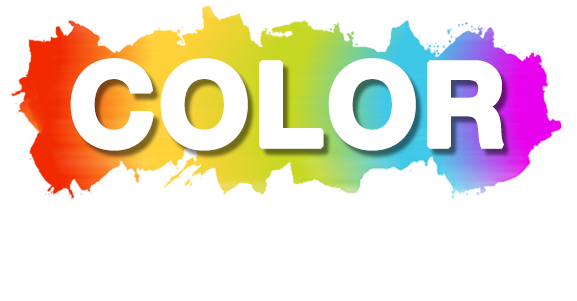Who owns hues?

Marketing research indicates that over 80% of visual information is related to color. In other words, color conveys information and/or provides the user with some other operational benefit.
The use of distinctive colors to identify products can be seen everywhere, from pharmaceutical items to industrial equipment. Some products are packaged in a variety of distinct colors. For example Kodak’s film comes in a yellow and black box and Fuji’s, green. Other products tend to be packaged in variations of the same two or three colors in different designs. For example, laundry detergents are typically solid in blue, orange and/or yellow packaging. The actual design of the container or label may be quite different, even though the colors are the same. On the other hand, a more confusing situation may confront a consumer. Right next to your favorite brand of cough syrup, sits another brand in similar colors. Even the labels are oddly similar, so much that you might even confuse the two and pick up the wrong one by mistake.
Until recently, the importance of color as a brand identity wasn’t a big legal issue and the courts were lenient. It was an open question whether trademark law protected distinctive colors that had become strongly associated with a particular product or manufacturer. Today a color war is exploding and the use of color is generating unprecedented lawsuits.
Consider the fact that colors are in limited supply. Would allowing companies to appropriate a single color or a color combination lead to the "depletion" of all of the attractive colors in each product line?
Here are four examples of true “color” trademark infringement lawsuits. The first list contains a simple description of the four lawsuits. Decide how you would rule if you were the judge. The second list contains how the courts ruled. See if you agree!
1. Blue frozen dessert packaging (USA)

Ambrit, a frozen food company, had sold their frozen desserts in a royal blue packaging. Kraft Foods followed suit and used the same color on their packaging for frozen desserts. Ambrit sued to prevent Kraft from using blue. Does Ambrit - who first used this color - own the rights to blue on frozen desserts?
2. Red buckets (USA)

Dap, a building supply company, sold their ceramic tile mastic in a red three-gallon bucket for many years. When Color Tile Mfg. Inc. packaged their mastic in a red bucket, Dap sued. Does Dap have exclusive rights to use red on their adhesive containers?
3. Multi-colored candy wrappers (USA)

Life Savers, a well-known candy company, has used a multi-colored striped background on the wrapper for its multi-flavored hard candies. Later, Curtiss Candy Co. introduced their brand of hard candies in a multi-colored striped background wrapper. Life Savers sued. Do they have the right to get a permanent injunction against Curtiss to stop their use of a multi-colored striped label? Note: In this case, the issue is several colors and a striped design.
4. Red books (Austria)

An author of a series of books about legal matters used a deep red hue for the cover of his publications. The publisher of another series of law books claimed that they had been using a similar red color and that this color distinguished their books from others. They sued for trademark protection of this color. Who won?
... from our sponsors ...
The Rulings of the Courts
1. Blue Frozen Desserts (Ambrit v. Kraft)

The U.S. courts denied Ambrit's request for protection of blue, on the basis that royal blue when used to package frozen desserts was functional and could not be monopolized in a trademark. The ruling stated "Royal blue is a 'cool color;' it is suggestive of coldness and used by a multitude of ice cream and frozen dessert producers." Although the ruling acknowledged the issue of protecting the consumer from confusion, preventing a monopoly of a functional color was a greater issue.
A similar lawsuit occurred when Campbell Soup tried to obtain an injunction against another food company, Armour, stating that the company's use of red and white labels on foods were an instance of trademark infringement. However, the U.S. court denied Campbell the right to the exclusive use of labels which are half red and half white for food products, ruling "If they may thus monopolize red in all of its shades, the next manufacturer may monopolize orange in all of its shades and the next yellow in the same way." Obviously the list of colors will soon run out. Note: The court also found that the Campbell red was not the same as Armour's Carnation red and that Armour most often uses the red-white color scheme in a different pattern than Campbell's.
2. Red Buckets

A federal district court ruled in favor of Dap and granted protection to their red packaging. They found that "secondary meaning" was attached to DAP's red plastic bucket for its tile mastic the color red was not a functional feature of the tile product. Red had nothing to do with the color of the adhesive, the ceramic tile industry, or the product’s performance. In other words, there was no logical reason for red, such as a red fire extinguisher's functionality related to red fires. Dap used the color solely as a unique color for brand identity.
Therefore, there was no logical reason for a competitor's copying DAP's packaging "save an attempt to realize upon secondary meaning that is in existence." (In other words, using the same red color was seen as exploiting the identity of Dap’s products and creating confusion for the consumer. )
The precedent-setting example of "secondary meaning" of a color was the basis for the Federal Court's ruling that Owens-Corning was entitled to trademark protection for its pink insulation. The ruling stated "A pink color mark registers for fibrous glass insulation does not confer a 'monopoly' or act as a barrier to entry in the market. It serves the classical trademark function of indicating the origin of the goods, and thereby protects the public."
3. Multi-colored candy packaging (Life Savers v. Curtiss Candy Co.)

The court denied Life Saver protection of their striped colors, citing that no trademark infringement or unfair competition had been established. They found that it was a "general practice of the trade" for hard candy manufacturers to sell their candy in packages with multi-colored backgrounds for their assorted flavored discs, and labels with single colored background for their packages containing one flavor of candy discs." They concluded that the multi-colored background was in fact descriptive and served as a ready identification of the flavor of the candy in the package. Once again, an example of functional color.
4. The red law books (Manz'sche Verlags v. Linde Verlag)

In 1997 theleft Supreme Court of Austria ruled that the use of a color on products of a color previously established to identify the goods of another party violated Section 9 of the Unfair Competition Act. The decision prohibited the defendant from publishing law books in the same shade of red as the plaintiff's legal treatises. It is interesting to note that the defendant proved that a number of publishers in other countries, for example, in Germany, publish their law books in the same shade of red. The Supreme Court nevertheless held that the plaintiff was entitled to protection in Austria.
The Final Verdict?
Many businesses have taken steps to protect their color identity because of the impact of colors on sales. The principle that a single color may receive trademark protection is now the law of the land. This development manifests itself not only in national statutes, but also in the international Agreement on Trade-Related Aspects of Intellectual Property Rights, including Trade in Counterfeit Goods of the TRIPS Agreement.
On the other hand, the courts recognize that colors are in limited supply and that allowing companies to appropriate colors will soon lead to the "depletion" of all of the attractive colors in each product line.
Although the courts tend to view that preventing the use of a color would put a competitor at a significant disadvantage, the color must pass the functionality test.
Functionality can be defined by multiple criteria. Here’s a simplified list:
- Psychological Effects (symbolism, associations)
When a color’s associations relate to the product in a literal or abstract way, this is considered to be functional. For example, green is frequently used in packaging of organic, healthy and natural products because if the association with trees, grass and nature. Another example is blue fertilizer (indicating the presence of nitrogen).
- Aesthetic Effects (attractive and effective design)
Many color combinations can be considered to be harmonious and “pleasing to the eye.” For example, green and yellow are harmonious since they are closely related to each other (analogous). Functional design effects may also include perception of size and weight. For example a black outboard motor appears smaller than motors in other colors.
- Visual Effects (eye catching, text legibility)
The human eye reacts to color in many different ways. Some colors are advancing (and grab attention), others receding. Some color combinations render text legible; others are problematic.
In conclusion, in spite of precedent setting lawsuits, the laws of color ownership are in flux. Prior rulings are frequently reversed by subsequent lawsuits. Consequently, companies continue to take legal action and millions are spent to defend the rights to color. Could all the colors of the rainbow be confiscated in a marketing war? It’s a wake-up call for everyone who cares about color.
~~~~~~~~~~~~~~~~~~~~~~
This article was written by Jill Morton and is based on her experiences as an expert witness in several recent color trademark lawsuits. For more information, visit the Colorcom website.
from our sponsors
Trustworthy color formulas for logos and branding
An e-Course from Jill Morton, Color Matters author & consultant.
Links to other articles on this topic:

People see color before they absorb anything else.
Color & Branding
Many of the most recognizable brands in the world rely on color as a key factor in their instant recognition. Find out more about why color matters in our new article: Color & Branding
Can you "own" the colors of your brand? Does John Deere own green? Does Barbie own pink? Does Tiffany own "Robin's Egg" blue? Find out what the TM and ® symbols mean : Color Branding & Trademark Rights
Also:
Color Matters Blog
Color Infringement: Microsoft vs. Google - 2009






